Jan Hulsen

Dries Aerden

Jack Rodenburg

Jan Hulsen

Dries Aerden

Jack Rodenburg
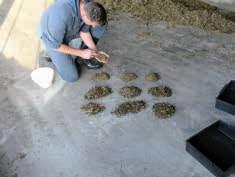
A practical guide to feeding dairy cows for health and production
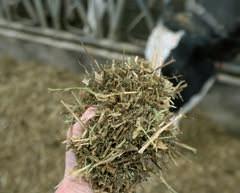
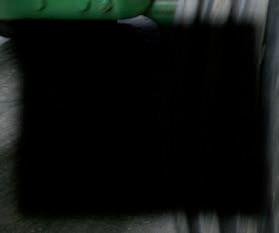
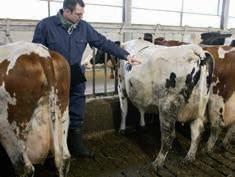
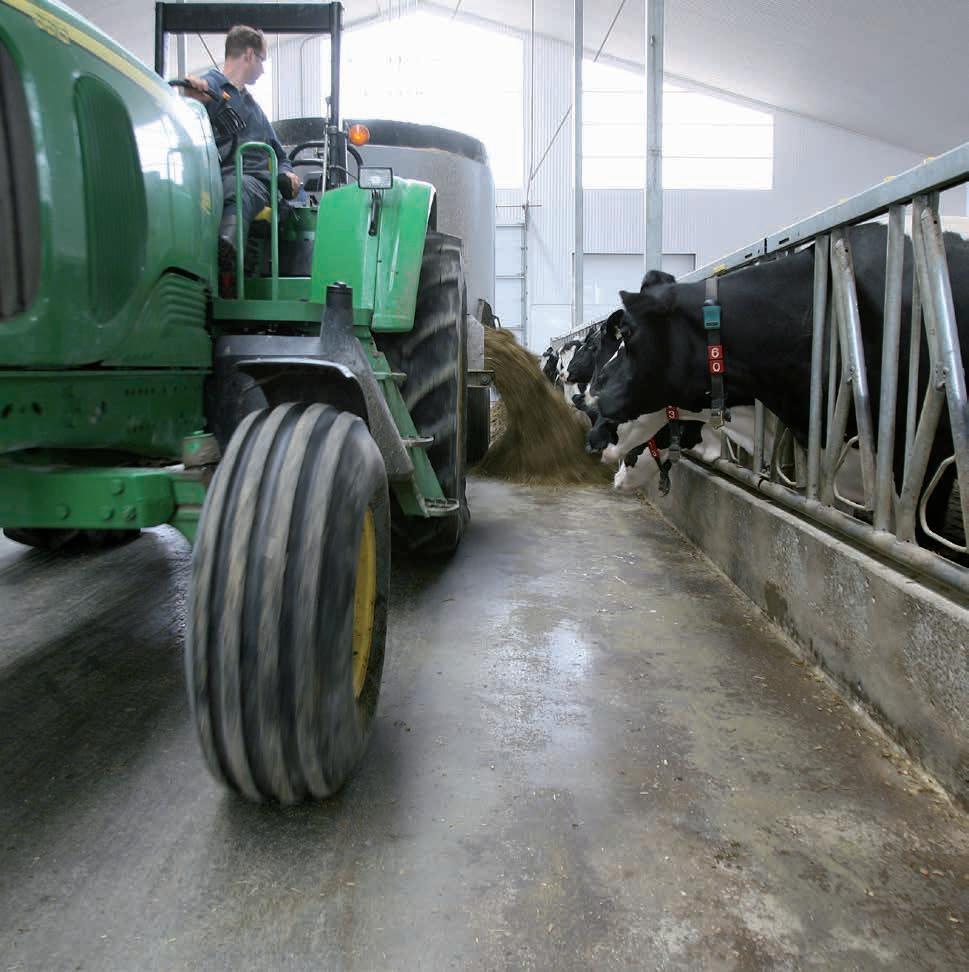
Authors
Jan Hulsen, Vetvice®
Dries Aerden
Jack Rodenburg
Editors
Ton van Schie
Christel Lubbers
Translation
Agrolingua
English content editors
Owen Atkinson
Jack Rodenburg
Photography
Jan Hulsen (unless otherwise stated)
Anneke Hallebeek (31)
Broer Hulsen 7, 9 (2x), 31 (2x), 50, 78)
Bertjan Westerlaan (28)
Illustrations
Trudy Michels, Studio Michels
Herman Roozen
Design
Varwig Design
With the collaboration of Joep Driessen, Dick de Lange, Bert van Niejenhuis, Pieter Paschyn, Nico Vreeburg, Bertjan Westerlaan, Jaap van Zwieten
Special thanks to Owen Atkinson, Jack Rodenburg , Freek van Essen, Kees Haanstra, Paul Hulsen, René Knook, Roel Koolen, Adri Maas, Aart Malestein, Niek Mangelaars, Ria and Ronald Raats, Kees Simons, Lucas Talsma and a great many livestock farmers, advisors, vets and others involved with dairy cows and dairy farming
Roodbont Publishers B.V.
Postbus 4103
7200 BC Zutphen
The Netherlands
T +31 575 54 56 88
E info@roodbont.com
I www.roodbont.com
CowSignals® Training Company
Hoekgraaf 17A
6617 AX Bergharen
The Netherlands
T +31 (0)487 745 041
E info@cowsignals.com
I www.cowsignals.com
Feeding Signals is part of the successful CowSignals® series. CowSignals® is a registered trademark of CowSignals®Training Company. CowSignals training and e-learning is provided by: CowSignals® Training Company. CowSignals content is provided by Jan Hulsen/ Roodbont Publishers.
© Jan Hulsen, 2020
ISBN: 978-90-8740-156-6
Vetvice® Group
Moerstraatsebaan 115
4614 PC Bergen op Zoom
The Netherlands
T +31 165 30 43 05
E info@vetvice.com
I www.vetvice.com
LIBA
Dorpsstraat 21
3950 Bocholt
Belgium
T +32 (0)89 46 46 06
F +32 (0)89 46 11 79
E info@liba.be
I www.liba.be No
The authors and publishers have made every effort to ensure the accuracy and completeness of information contained in this book. However, the authors and publishers assume no liability for damage of any kind resulting from actions and/or decisions based on this information.
The publisher has made efforts to trace the owners of the visual material. Where a source is uncredited, the owners can contact the publisher.
Cows are social, grazing, ruminating prey animals. It is rumination that sets cows apart from other animals: thanks to the fermentation processes in the rumen, cows can turn low quality forage into high quality food – milk and meat.
Tailoring your feeding, housing and care to the needs and attributes of the cow and her digestive system enables you to optimise production, health and welfare. And that leads to sustainability and a good income.
Cows eat, lie and walk together in groups. Stress and food aggression occur if not all the animals in a group can eat at the same time. An animal that can’t eat or lie at the same time as the rest of the group will eat her meals faster and will eat less.
Cattle use eating to confi rm group relationships and dominance. This is usually demonstrated with very short, rapid signals. Dominant cows make it clear that they are the boss and low-ranking cows indicate that they know their place. This also happens at drinking places. It is essential for the animals.



Grazing cows fill their rumens with grass and then go and lie down in a dry, safe place to chew their cud. They do everything in groups, and all the animals in a group eat and rest at the same time.
Rumen flora make the menu

Vegetable material contains a lot of cellulose. Animals can’t digest this, but microorganisms such as bacteria can. Ruminants have two stomachs in which microorganisms break up the feed they have eaten. This process is called fermentation, the stomachs are called the rumen and reticulum, and all the microorganisms are collectively known as the rumen fl ora.
Sufficient chewing
Suffi cient chewing and, in particular, chewing the cud are a sign of a healthy ration that contains the right amount of fi bre. Chewing well keeps the rumen healthy and encourages plenty of ruminal activity, which is also necessary for a healthy rumen. Feed containing too little fi bre gives rise to abnormal behaviour among calves, such as udder sucking, navel sucking and urine drinking, and forms hairballs in the rumen. With older cows this can lead to rumen problems, gastric ulcers, intestinal problems, pica (eating things they shouldn’t) and diarrhoea.
A high-producing lactating cow eats for 14 to 16 hours a day on average. On an indoor ration she chews for 4 to 6 hours and ruminates for 9 to 11 hours. With 100% grazing it is roughly the other way round.

Prey animals always keep an eye on each other and their surroundings and react immediately to any threats, other animals’ reactions and unfamiliar situations. A nervous cow eats more quickly. But this also means that she eats less. And she stays standing up instead of lying down. In a relaxed herd all the cows eat at ease, but this is not the case in a nervous herd. Calm is created by giving the cows a sense of safety and certainty. Nervousness can quite easily be prevented if every cow can react safely.
Nervousness can be caused by many things, such as confl icts with other cows, fear of people or equipment, and unexpected, frightening events. Not being able to lie down enough also causes a lot of nervousness and stress – this happens when there are not enough lying places, or when the lying places are not comfortable.
Walking is healthy
Cows don’t have an overwhelming desire to walk around, but walking is very benefi cial to their vitality. If they have enough space to walk in, they will also have enough personal space, room to avoid confl icts and room to escape. In their natural environment cows walk from 5 to 15km (3 to 9 miles) a day, depending on the amount of grass and the distance to water. In a cubicle house, a dairy cow not in heat walks 1.5 to 2.5 km (1 to 1.5 miles) a day.

Rectum
• absorbs water to reduce loss of fluids
Pancreas, gallbladder, small intestine
• increase pH
• add digestive enz ymes
• small intestine absorbs nutrients
Anus and vagina
• average of 70 litres (19 US gallons) of urine and manure a day with 8-9% dr y matter
Caecum, large intestine
• gut flora ferment the remaining fibres and nutrients
• absorb volatile fatty acids and water
Abomasum
• adds gastric acid and enz ymes
• digests rumen flora and other nutrients
• absorbs nutrients
Around 300 to 400 litres (80 to 105 US gal.) of water pass through the rumen of a lactating HF cow every day. Feed contains about 50 litres (13 US gal.) of water. A dairy cow drinks 4 to 5 litres of drinking water per kilogram of dry matter that she eats (0.5 to 0.6 US gal. per lb). This amounts to 80 to 120 litres (20 to 32 US gal.) of water a day at an ambient temperature of below 22 to 25°C (72 to 77 °F). And the animal produces 200 to 250 litres (53 to 66 US gal.) of saliva a day. This saliva:

• moistens the feed and adds to the rumen fluid
• prevents the rumen pH dropping too low
• circulates nitrogen (urea) for protein production, as well as phosphorus and sodium.
A lot of the water in the feed pulp is absorbed again by the omasum and the large intestine. Cows lose water in their milk, urine and manure, and it evaporates in their breath.
Half of a cow’s saliva is produced when she chews, and the other half is produced continuously. If a cow doesn’t swallow or has a blockage in the oesophagus, saliva immediately starts drooling out of her mouth.
Omasum orifice
• blocks the floating mat and lets digested feed through
Rumen
• contracts to mix contents
• rumen flora break down the feed for their own energy and growth, producing volatile fatty acids
• rumen wall absorbs volatile fatty acids and minerals
Volatile fatty acids meet 50-70% of the cow’s energy needs. Rumen content: 180-200 litre (48-53 US gal.)
Throat, oesophagus

• direct feed to the rumen
• regurgitate the cud. Feed intake per day: 15-23 kg (33-51 lbs) dr y matter = 30-90 kg (66-198 lbs) fresh weight
Omasum
• absorbs large amounts of water, volatile fatty acids and cer tain minerals
• pumps feed pulp through
Reticulum
• regurgitates cud
• pumps rumen contents around and to the omasum
So a cow feeds itself from the rumen flora, the residual products from fermentation and nutrients that pass through the rumen and rumen flora. Volatile fatty acids are what is left over from the fermentation of carbohydrates (sugars, starch, cellulose). A dairy cow’s total volatile fatty acid production meets 50 -70% of her energy needs. She gets the rest from starch in the small intestine, fat and protein. The feed pulp is fermented again in the caecum and large intestine. The volatile fatty acids produced there provide 10 -15% of her energy
Mouth, tongue, teeth
• reduce and crush feed
• add saliva (200-250 l/ day, 53-66 US gal./day)
Nose, eyes, tongue, muzzle
• select feed and take it in
Feed intake:
• at pasture: 1 kg dry matter per hour
• feed fence: 1.5-2 kg (3.3-4.4 lbs) dm per meal of approx. 1/2 hour
Ideally cows should be eating 12 identical meals spread throughout the day. They should chew a lot and they should not feed selectively (‘sorting’). The more milk they are producing, the more important this is. For cows to be able to eat a large number of meals and chew calmly, the eating place must be easily accessible and they must be able to eat stress-free. The feed must always be palatable, and the fact that they are fed often (≥ 2x) and feed is pushed up means that they never eat extremely large meals. New feed delivery always encourages the cows to go and eat. And in order to eat a lot, they also need to drink a lot.
Small meals, lots of chewing
A cow should eat a large number of meals spread evenly throughout the day. This way each meal is small, the rumen is kept full and drops in pH are minimised. In good barn conditions dairy cows eat around 10-14 meals per day. The most productive animals eat 14 times per day.
A cow is eating optimally if:
• she can get to palatable food easily
• she doesn’t have to rush
• she can eat in comfort
• she is healthy and free from pain and stress
• she has regularity and a routine

• she can eat at the same time as the other cows.
Eating together, lying together
A cow that can’t eat at the same time as the rest of the group will eat more hurriedly and will often eat less. She will also lie down less, which puts extra pressure on her feet.
As long as there is always plenty of palatable feed with the correct composition available, you can limit the consequences of having too few eating places. But if feed is limited or diffi cult to access, or if cows eat selectively, they will start to fi ght for dominance and the weaker or lower ranking animals will suffer. This will result in more problem animals, which in turn means more work for you, higher costs and lower production. This has the greatest impact on dry cows and the least on low-production cows.
With her ears back and a slight head movement, the black cow sends a ‘threatening’ message to the white cow. The white cow does not threaten back, so she is confirming the dominant position of the black cow. Confirming social ties and dominance is a very important part of eating and drinking.

Animals that don’t eat with the main group will eat when the main group is resting. They will eat more quickly, resulting in more rumen acidosis and poorer feed utilisation. They will also often eat slightly less, which can lead to greater weight loss and ketosis.

The cow mainly uses her nose to decide whether food is palatable – i.e. by smelling it.

If cows don’t eat a mixture of all the feed together, they will tend to eat meals consisting of rapidly digestible feed. This can cause the pH in the rumen to drop temporarily and the feed to pass through to the small intestine more quickly. Later meals will usually digest slowly because they contain less readily available energy or protein for the rumen fl ora.
Selective feeding , or sorting also produces more friction between the cows, particularly if not all cows can eat at the same time.
Feeding more often reduces the occurrence of sorting. The feed components will remain more palatable because the cows do not contaminate them with saliva and less heating will take place. Cows can’t pick out large quantities of concentrate to eat when there is less feed in the trough. The length of time cows have to eat has no impact on sorting of feed.

Eating as much dry matter as possible
Whether a cow eats the maximum quantity of dry matter she can eat is determined by:
1. The digestibility of the ration
More rapidly digestible feed disappears quickly from the rumen.
2. The volume of feed Rations that are very wet or very bulky, such as a dry-off ration, a parlour ration with less than 30-35% dry matter or grass that is soaking wet, will fi ll up the rumen before the cow has satisfi ed her hunger.
3. The taste of the feed
Feed that is even more appetising will not make the cows eat more, but feed that does not taste good will make them eat less. Supplying fresh feed entices the cows to come and eat.
4. Rumen problems, illness and pain

All causes of discomfort, stress and anxiety reduce feed intake.
This cow is standing with her hind legs too far forwards. They are also pointing outwards and she seems to be taking the weight off her right rear foot. These are hoof signals that point very strongly to sole haemorrhages (bruising). Underlying causes are rumen acid-osis and severe weight loss (reduced hoof quality) combined with uncomfortable cubicles and long standing times (high load). Treat the cow and tackle the causes.

Feeding cows starts with the ration: what are you going to feed, and how much? The computer calculates this on the basis of the criteria and values you enter. The available forage is the starting point for this. Next are your production targets and your feeding method. Feed costs and expected production are key in the computer calculation.
In a ration calculation, based on the feeds you have available you put together a daily ration that meets the animals’ energy, protein, fi bre and minerals/trace element requirements.
You will fi nd the standard nutrient requirements in documents such as the Table Book for Livestock Nutrient
Requirements (Tabellenboek Veevoeding) published by the Dutch Central Bureau for Livestock Feeding (CVB). The requirements depend on your production targets, i.e. the kilograms (lbs) of milk the cow must produce and how many kilograms (lbs) young cattle must put on in weight. You also need to bear in mind the maintenance requirements that depend on body weight. Then you can add in the expected growth of the foetus carried by the pregnant cow and the growth of the cow in the fi rst and second lactation.
A ration consists of various products, or feedstuffs. Always start with the forage that you have in inventory. You know exactly how much there is and what its nutritional value is. Sometimes you can change the proportions fed to a limited extent. The nutritional value is the amount of energy, protein, fi bre and minerals it contains. Then comes the feed you buy in. You choose this on the basis of nutritional value and price. You also need to know to what extent and how quickly the feed ferments in the rumen. A degradable product ferments in the rumen, while a completely undegradable product passes through it unchanged.
Putting together a ration is a process of well-prepared trial and error. You have to make certain estimates and choices in your calculation. The cows will tell you within 48 hours (dung), one week (milk) and one month (BCS) whether you were right.
Rations are calculated on the computer, usually with special software. This will look for the cheapest possible ration that meets all the requirements entered, based on the feedstuffs and nutritional values you have entered.
1. Choose the right nutrient standards
2. Use the right figures
3. Include cow signals
4. Optimise in order of contents
5. If you give cows additional individual concentrate: do step 4 for 3 scenarios
For each group, specify the average cow and then the appropriate nutrient standards.
• Correct figures from feed analyses
• Actual, measured feed intake
E.g. if rumen fill is low, do not increase fermentation rate

1. Right energy content
2. Right protein content
3. Right fibre content

4. Right mineral content
1. Without additional concentrate
2. With average additional concentrate
3. With maximum additional concentrate

The ration must make the right quantity of protein and energy available in the rumen in the right proportions. If the cow eats the same ration all day long, these proportions will rarely change. When estimating the fermentation rate, you need to look at the total ration. Depending on this, you can adjust it to create a slow or fast product. With fast products you can feed a cow more nutrients per day because they disappear from the rumen quickly, making room for new feed. But too rapid fermentation can cause rumen acidosis and can result in feed passing through too quickly, so utilisation of the feed drops and the cow may get sick.
Fermentation rate
Carbohydrates
Molasses
CCM
Milled wheat
Milled barley
Rolled wheat
Rolled barley
Caustic treated wheat
Include feed and cow signals
Crude protein
Urea
First assess silos and feed storage, feeding, feed in the manger, animals and manure. Is heating taking place or is there loss of taste? Are you feeding-out, loading, feeding and pushing up correctly? Are the animals producing what their genetics say they can? Can each animal eat from the ration without restriction for at least 22 hours per day? Is there plenty of fresh water available? What are the body condition scores (BCS) of the lactation groups?
Potatoes
Beet pulp, dry
Maize meal
Maize gluten
Maize silage
Beet pulp, wet
Lucerne
Grass silage
Palm kernel meal
Barley straw
Wheat straw
Rape straw
Distillers syrup
Field mustard meal (Prairie meal)
DDGS (Dried Distillers Grains)
Grass silage, wet (30% dm)
Sun ower seed meal
Maize gluten
Soya meal
Grass silage, dry (60% dm)
Brewer’s grains
The ‘fermentation rate’ is the speed at which the feed ferments in the rumen. Very fast products are associated with a high risk of rumen acidosis (carbohydrates) or rumen alkalosis (proteins) if the cow eats too much at once.




The cows will tell you every day exactly how good their feed, health and well-being are. So check their production every day: whether they are all eating enough, whether they are all eating the best possible ration every day, and whether you need to make any adjustments. In addition to the cow signals, also check your measured data such as your milk production curve, contents, growth, health and feed efficiency. Methane emissions and nitrogen utilisation could be included as well.
When assessing groups of animals, estimate the average and check whether there are any big differences between the animals. Rations are always calculated for an average cow. Big differences between cows may be the cause of deteriorating results, but they may also be caused by problems with feed intake.
Abnormal cows, special attention cows
Determine how many cows are very different from the average, such as those with a very empty rumen or a too low or too high condition score. These are special attention cows. Always try to identify the cause and tackle it. Record the cases and check whether they could be linked. Are they all heifers or slightly lame animals, for example?
If the heifers in the herd are noticeably small, you know that they need to grow a lot more and are easily pushed away during feeding. Allow them to lactate for longer by only inseminating them after 90 days in milk (DIM). And consider setting up a heifer group. If they are too thin at dry-off, their production in the second lactation will usually be disappointing. Small heifers also indicate that you need to improve your young stock rearing.
Anyone checking cows must have a thermometer to hand, and a notebook or some other way of recording and passing on information.

For effective animal management you need to go and stand among the cows and take a look at all the animals from close by, taking their lactation stage into account, and assess any highrisk animals specifically.
Knowing and managing the risks

High-risk animals = control animalsHigh-risk times
The high-risk animals are the first animals to be affected by certain risks. If you know your high-risk animals, you can use them as control animals. If these animals are doing well, then a risk taken intentionally won’t cause problems. For example, fresh cows and highproducing cows are at high risk of rumen acidosis, and heifers, weak and lame cows are at high risk of gaining inadequate access to the feed.

Production is lower than expected. What do you do?
The cows know exactly and are always right. So start by checking the cows and work your way back to the feed, the ration composition and the feedstuffs. Is every animal eating enough throughout the day? Is every animal eating the correct, healthy ration?
High-risk times for feeding are periods when water or feed intake are under pressure. It may be that the animals are taking in too little all day or even for part of the day. High-risk times can affect one single cow, such as calving or heat. But they can also affect a whole group, such as periods of hot weather or changes in rations. At high-risk times, assess feed intake behaviour and rumen fill, or rumen fill and manure immediately afterwards.
High-risk places
Every place that can have a negative impact on feed intake is a high-risk place. Examples are uncomfortable feed fences, dead-end routes and narrow alleys.

An old Dutch farmers’ saying
Good feeding is the basis of your farm’s success, not only financially but also in terms of production, animal health and fertility. Did you know that almost 50% of the differences in milk production between farms is determined by the ration composition? And that the rest is down to other things such as housing, animal health and cow management?
Feeding Signals answers the four practical questions that every dairy farmer and worker on every dairy farm asks:
1. What should I feed and how much?
2. What is the best way to make sure every animal gets the right ration?
3.How do I check that every animal is eating what they should be eating?
4.How do I make adjustments and solve particular problems?
This book contains a fascinating array of practical tips and valuable guidelines about the essence of healthy, economical feeding. Did you know that a cow that can’t eat with the group eats her meals faster and takes in less feed overall? That a dairy cow produces about 200 litres (53 US gal.) of saliva a day and pumps about 15,000 litres (4000 US gal.) of blood through her udder? And that most farms prefer not to feed early in the morning?
In addition, Feeding Signals shows you what you as a dairy farmer can do today to improve your feed management, with reliable information, short explanations and lots of images taken on working farms. www.cowsignals.com
Feeding Signals is part of the Cow Signals® series. These books present highly practical knowledge on animal-focused dairy farming in an accessible way. www.liba.be